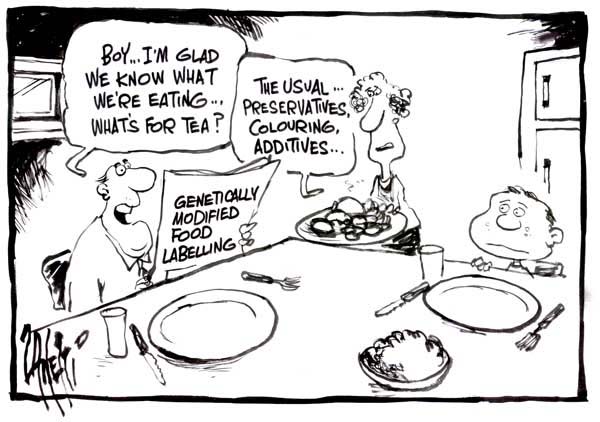The statement of H.R. Bharadwaj - the union Law Minister on the wives of the Judges is one of the most MCPd I have heard in recent times. How can this man be part of a cabinet that is brining in the women's reservation bill!
Union Law Minister H R Bhardwaj though said the judges were doing nothing wrong. "They (judges) also need comfort, they also need to go out. Why they should be deprived of it? How can you deprive the wife? You are a woman. You should understand,” Bhardwaj told CNN-IBN’s correspondent.
 Some time back there was this news item where the CJI was quoted as saying that the RTI does not apply to his office!! I was surprised that this quote was not challenged, later saw that Tahelka had carried a news item on this with interviews from others including his predecessors where they opined otherwise. During the same time I found another news report from the CJI again where he said on the issue of declaration of assets by sitting judges of Supreme Court stating that, 'they present information regarding their new assets in a sealed envelope to me'. Not saying as to what he does do with this sealed envelope which was rather surprising!
Some time back there was this news item where the CJI was quoted as saying that the RTI does not apply to his office!! I was surprised that this quote was not challenged, later saw that Tahelka had carried a news item on this with interviews from others including his predecessors where they opined otherwise. During the same time I found another news report from the CJI again where he said on the issue of declaration of assets by sitting judges of Supreme Court stating that, 'they present information regarding their new assets in a sealed envelope to me'. Not saying as to what he does do with this sealed envelope which was rather surprising!
Well, here is a result of a smart RTI by the CNN-IBN from the law ministry on the extravagant spending by the CJI himself. It is time that someone started to look seriously at the accountability of the Judiciary in this country.
-----------------------------------------------------------------------------------------
New Delhi: The Chief Justice of the Supreme Court, KG Balakrishnan, wants judges to be kept out of the purview of the Right To Information (RTI) Act.
Now an RTI application put in by CNN-IBN has thrown up interesting details of how judges have extended their holidays, often for personal purposes, at Government expense.
Ironically, the urge to travel starts at the top. Balakrishnan, after taking over as Chief Justice, made at least seven trips abroad in 2007 traveling First Class with his wife with the air fare alone costing over Rs 39 lakh.
For instance, during his 11-day trip to Pretoria, South Africa in August 2007, the Chief Justice took the following route - Delhi, Dubai, Johannesburg, Nelspruit, Capetown, Johannesburg, Victoria Falls, where the judge finally didn't go and returned via Dubai to Delhi.
The air fare alone cost Rs 5.70 lakh and did not include the stay, TA, DA or Entertainment Allowance. Entertainment Allowance itself was over Rs 80,000.
Government rules permit travel only by the shortest route, yet the Prime Ministers Office, which sanctions these trips, did not ask why the Chief Justice wanted to go to tourist destinations like Nelspruit, Capetown or Victoria Falls.
Union Law Minister HR Bhardwaj says, " They also need comfort, they also need to go out. Why they should be deprived of it.''
And what about government rules that say judges cannot be accompanied by wives on work tours? "How can you deprive the wife? You are a woman. You should understand,” Bhardwaj tells the CNN-IBN correspondent.
Former chief justice YK Sabharwal's foreign travel was no different. The judge attended three conferences in 2005 to Edinburgh, Washington and Paris.
While the conferences lasted 11 days, Sabharwal was out for 38 days with 21 days converted into a private visit.
The travel plan includes a detour from Washington to Baltimore, Orlando and Atlanta, before rejoining the conference route in Paris.
The First Class air fare for Sabharwal entire trip was paid by the Central government.
The other judges too have traveled abroad costing the exchequer huge sums of money. Supreme Court judges Justices PP Naolekar and AK Mathur could not find a direct flight to Bangkok in November 2007.
Both judges and their wives spent Rs 5.5 lakh traveling First Class from Delhi to Kuala Lumpur to Bangkok to Singapore to Delhi.
This does not include 5-Star stay or the Entertainment Allowance of Rs 84,000 paid for a seven-day trip, even though the conference took just three days.
RTI queries have revealed other judges who spent big on single trips include:
- Justice Ashok Bhan and wife: Rs 13.66 lakh on air fare in 2006.
- Justice Arijit Passayat and wife: Rs 13.01 lakhs in 2006.
- Justice HK Sema and wife: a single trip in 2007 that cost Rs 11.84 lakh
- Justice BN Agarwal and wife took a trip in 2006 that cost Rs 11.77 lakh
- Justice KG Balakrishnan and wife in 2006 as well, who cost the exchequer Rs 13 lakh.
The Supreme Court has an annual budget of Rs 1.65 crore for the foreign tours of its 26 judges, which is meant for important judicial conferences.
But who decides which conferences are important, whether spouses can go along, or whether private holidays can also be thrown in?
The details of foreign tours of the higher judiciary have been a secret until this RTI application.
While the Chief Justice might be against the judiciary coming under the purview of the RTI Act, the fact is it is the tax payer which is funding a majority of the tours of our judges.
Source: CNN-IBN










